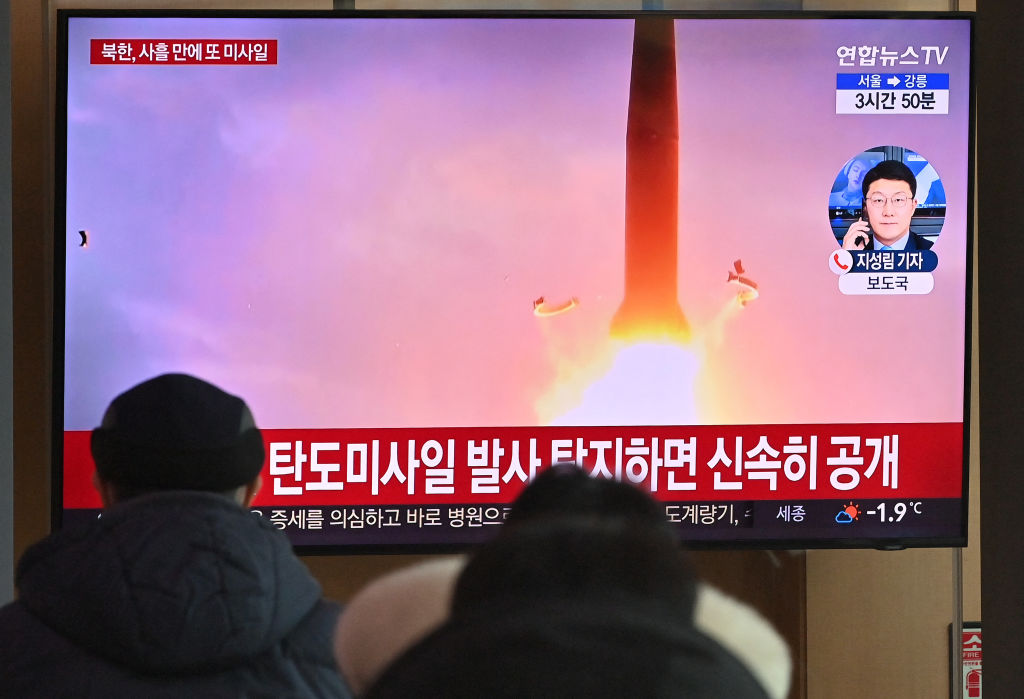North Korea’s efforts to attract the attention of a world fixated on Russia’s war of conquest in Ukraine succeeded briefly on Wednesday, but perhaps not for the hoped-for reasons.
On Wednesday, a North Korean missile exploded in the sky over the capital of Pyongyang after being fired from Sunan, just outside the city, according to Reuters.
“It is presumed that it failed immediately after launch,” a statement from South Korea’s Joint Chiefs of Staff said.
But the failure comes amid concerns that North Korea is moving closer to testing an intercontinental ballistic missile that could reach the United States. A full-range ICBM test would violate U.N. Security Council resolutions.
The U.S. Indo-Pacific Command said the launch was a “ballistic missile” test and urged North Korea to “refrain from further destabilizing acts,” according to The New York Times.
North Korea last launched an ICBM in 2017.
One commentator said Pyongyang’s claims it is growing its space program’s capabilities have been a cover for ICBM activity.
“Their recent SLV [space launch vehicle] launches make a lot of analysts suspect that they are testing new ICBM capabilities without the political burden of calling them ICBM tests,” said Melissa Hanham, a researcher at Stanford University’s Center for International Security and Cooperation, according to The Washington Post.
“North Korea genuinely fears for its security from the South, the U.S. and Japan. ICBMs and a nuclear program makes them feel they can deter regime change and forced reunification,” she said.
Threats have been North Korea’s time-honored way of grabbing attention.
“Under the prolonged sanctions regime, North Korea finds it increasingly hard to sustain itself and is desperately seeking a way out,” Cha Du-hyeogn, an analyst at Seoul’s Asan Institute for Policy Studies, said, according to the Post.
“North Korea hopes an ICBM launch will effectively send its threat across to the United States and even extract concessions from President [Joe] Biden while his foreign policy resources are directed to Ukraine,” he said.
Despite Wednesday’s failure, experts are concerned over a rocket system called the Hwasong-17, unveiled in 2020.
The Hwasong-17 is a larger ICBM than the Hwasong-15, which could drop a nuclear warhead anywhere in the U.S., Hanham said.
“Thus, I am anticipating North Korea’s goal is to deliver multiple nuclear warheads to the U.S.,” she said.
But first, there are some bugs it will have to iron out.
Debris from Wednesday’s failed test fell around Pyongyang as North Korea continued a stepped-up pattern of rocket launches this year, Reuters reported.
Amid the testing, South Korean President-elect Yoon Suk Yeol has said he wants to expand his country’s ability to attack its northern neighbor.
North Korea’s Ministry of Foreign Affairs has said the United States is to blame for the tensions between North Korea and South Korea, according to the Post.
“The issue of the Korean peninsula has resulted from the hostile policy of the United States towards the DPRK,” the ministry said, using the acronym for the Democratic People’s Republic of Korea, North Korea’s official name.
“It is a truth illustrated by the history that unless the ‘root cause’ is completely eliminated, durable peace and security of the Korean peninsula and the region as a whole cannot be thought of,” it said.
This article appeared originally on The Western Journal.

























 Continue with Google
Continue with Google